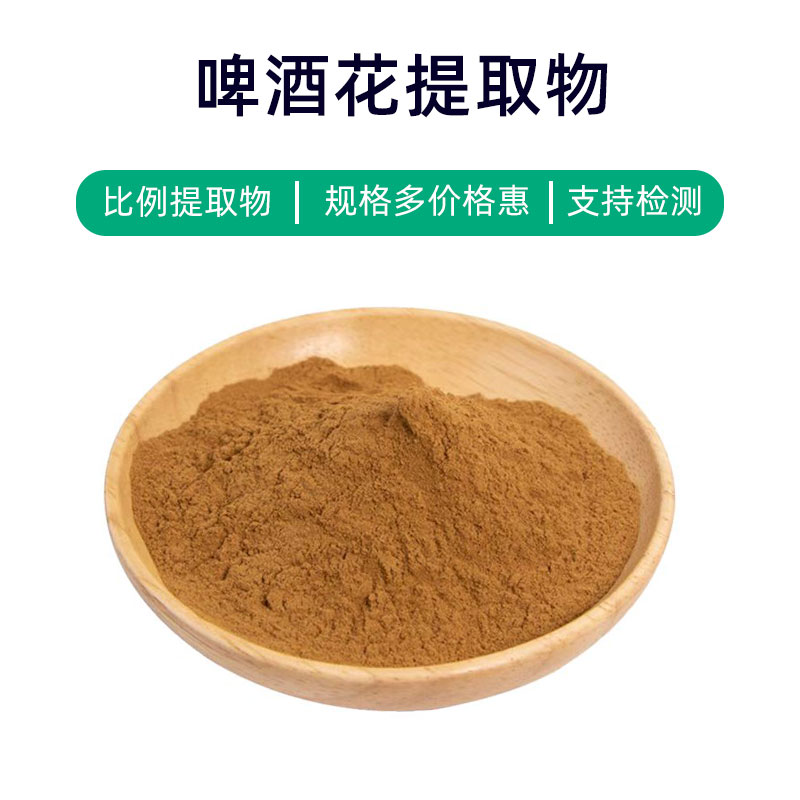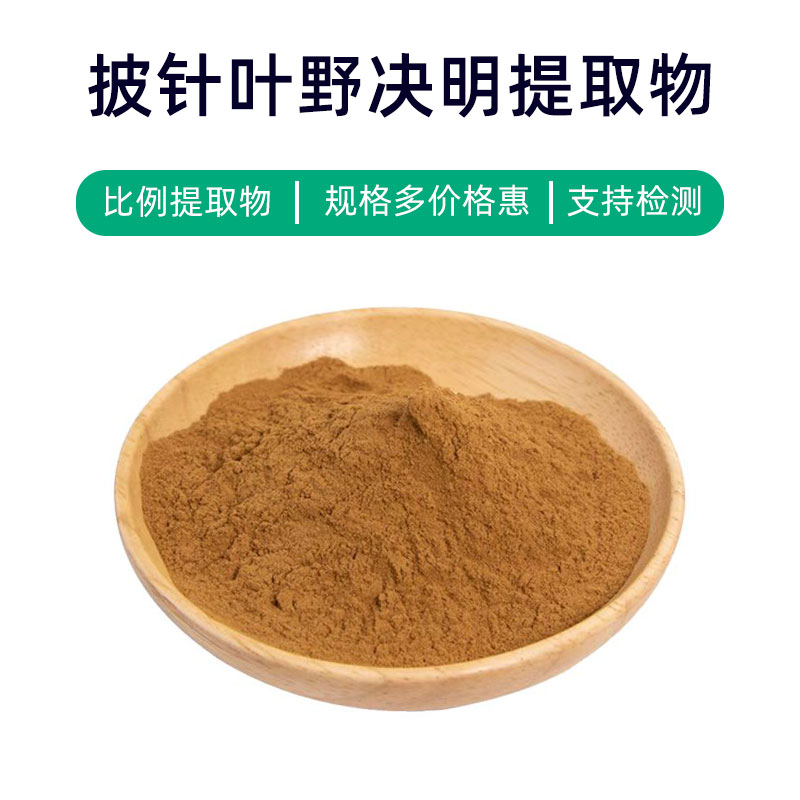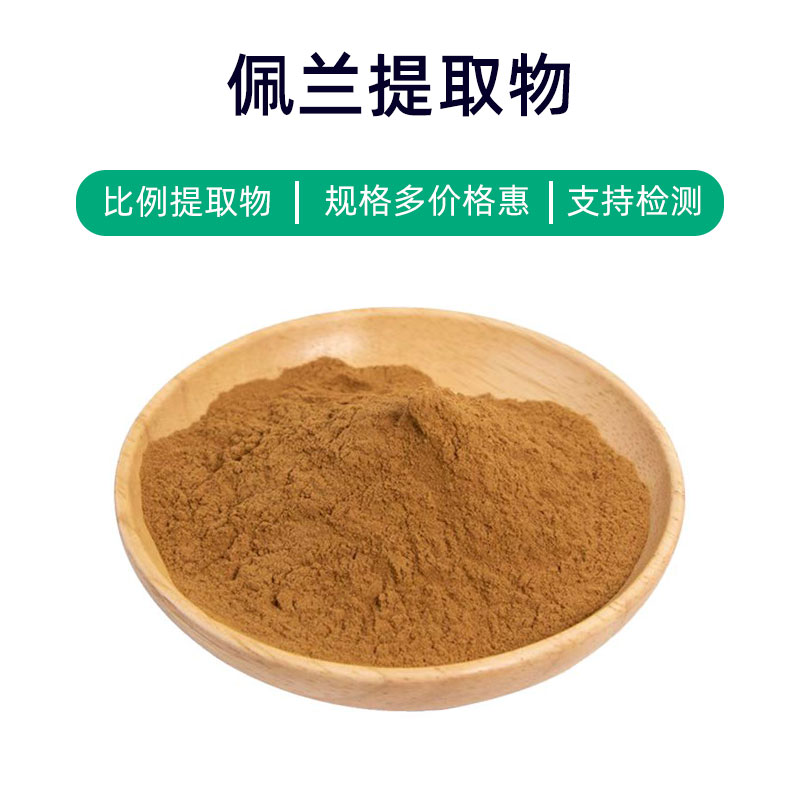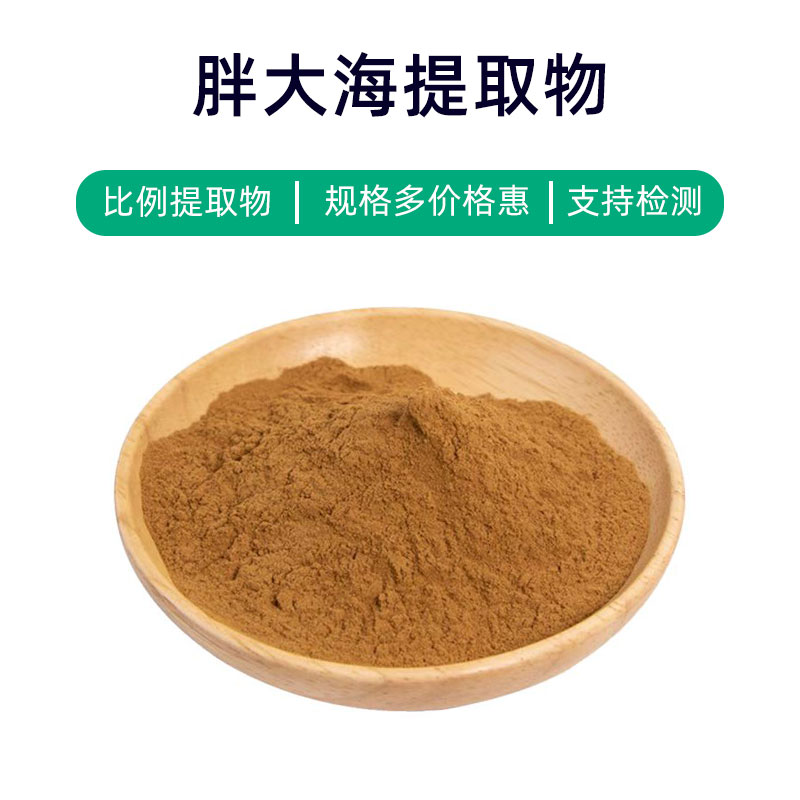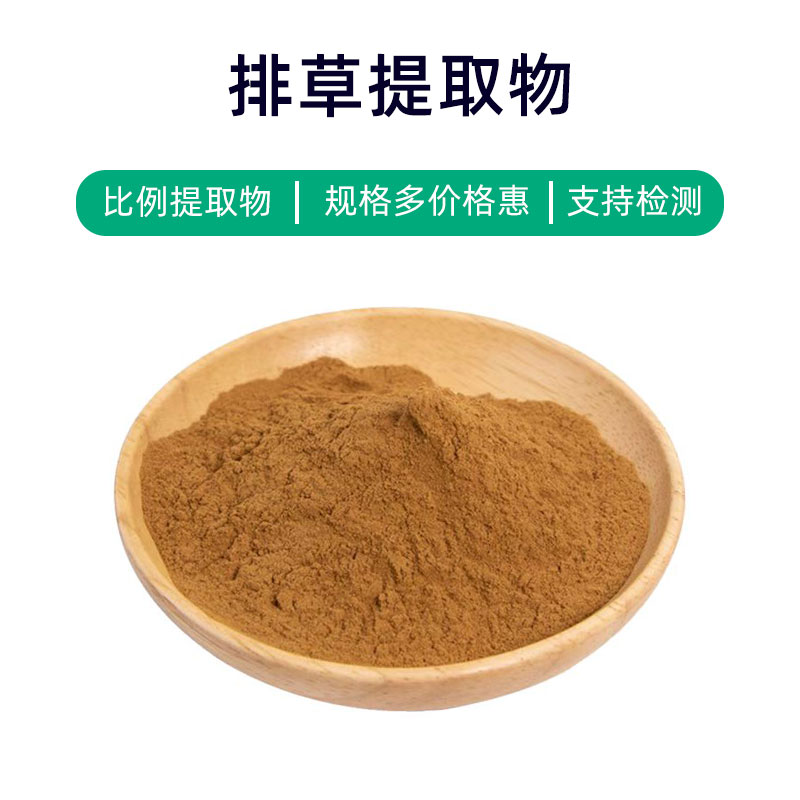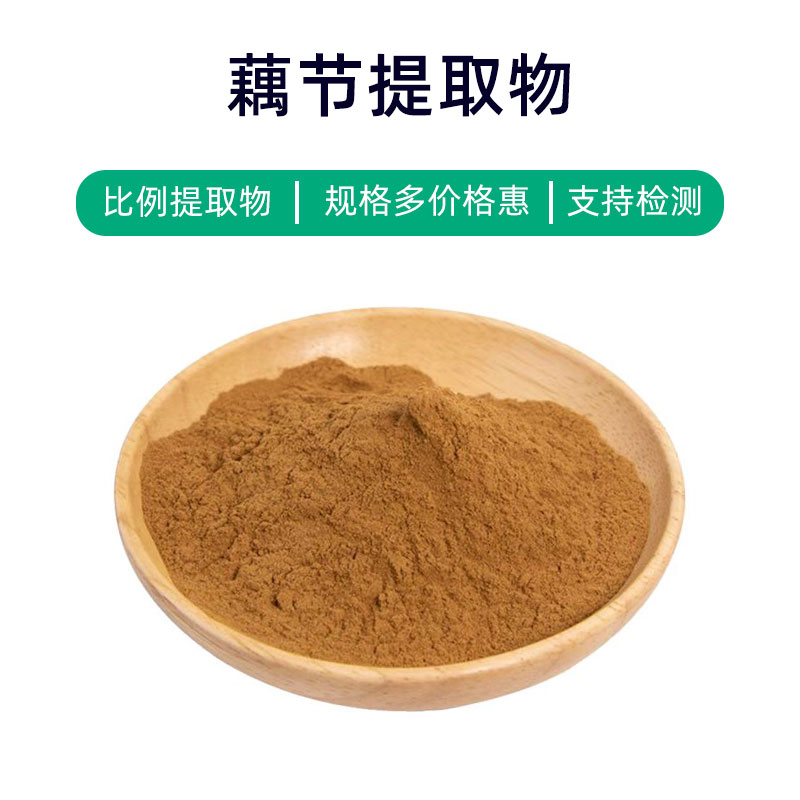Chrysanthemum Extract Product Introduction
Chrysanthemum extract is a natural plant extract derived from wild or cultivated chrysanthemums, primarily composed of flavonoids, essential oils, and chlorophyll. These components confer multiple benefits and a wide range of applications.
Chrysanthemum extract is known for its antioxidant, anti-inflammatory, calming, and antibacterial properties. Flavonoids like quercetin and rutin have notable antioxidant effects that help eliminate free radicals and slow cellular aging. The essential oil components provide anti-inflammatory and antibacterial properties, alleviating skin inflammation and inhibiting bacterial growth. Chlorophyll helps soothe the skin and reduce fatigue.
In the pharmaceutical field, chrysanthemum extract is commonly used in health supplements and medications to improve eye health, boost immunity, and relieve allergic reactions. In dietary supplements, it is often found in antioxidant and beauty products. In the food industry, chrysanthemum extract serves as a natural food additive, adding color and flavor. In cosmetics, it is frequently used in skincare and anti-aging products to help maintain healthy and youthful skin.
Overall, as a natural plant extract, chrysanthemum extract has various benefits and extensive applications, making it a favored natural health and beauty ingredient in medicine, food, and cosmetics.
Chrysanthemum Extract Production Process
The production process of chrysanthemum extract typically includes the following main steps:
- Raw Material Preparation: Select fresh wild or cultivated chrysanthemums as the raw material. Ensure that the picked flowers are in optimal maturity to guarantee the quality of the extract.
- Cleaning and Processing: Wash the picked flowers to remove surface impurities. Then, conduct preliminary processing, including removing stems and leaves, keeping only the petals.
- Extraction: Use appropriate extraction methods, such as water extraction, alcohol extraction, or supercritical fluid extraction, to extract active components from the flowers. Control temperature, pressure, and extraction time to retain active ingredients.
- Concentration: Concentrate the extract liquid to remove solvents or water, obtaining concentrated chrysanthemum extract. This is usually performed using vacuum concentration or spray-drying methods.
- Purification: Refine the concentrated extract to remove impurities and unwanted components, enhancing product purity and quality.
- Filtration and Sterilization: Through filtration and sterilization processes, ensure the purity and safety of the extract, preventing contamination by bacteria and microorganisms.
- Packaging: Portion the extract into suitable containers, package, and label as needed to ensure product quality and safety.
- Quality Inspection and Acceptance: Conduct quality inspection and acceptance of the finished product to ensure compliance with related standards and regulations, meeting expected quality requirements.
- Storage and Transportation: Store the finished product in a dry, cool, and ventilated environment, avoiding direct sunlight and high temperatures to maintain stability and efficacy of active components. During transport, avoid vibrations and pressure to prevent spoilage or damage.
The production process of chrysanthemum extract requires strict control of operational conditions and parameters at each step to ensure product quality and safety. Additionally, relevant production norms and standards should be followed to comply with legal regulations.
Chrysanthemum Extract Efficacy and Side Effects
Chrysanthemum extract is a common natural remedy with various effects and benefits, primarily including:
- Antioxidant Effects: Rich in flavonoids and polyphenolic compounds, chrysanthemum extract has significant antioxidant properties, capable of eliminating free radicals, reducing oxidative stress, and protecting cells from oxidative damage.
- Anti-inflammatory and Antibacterial Effects: The active components in chrysanthemum extract possess anti-inflammatory and antibacterial properties, useful for treating skin inflammation and infections, as well as in oral care products for sterilization and inflammation reduction.
- Immune Function Regulation: The bioactive components in chrysanthemum extract help regulate the immune system, enhancing overall immunity and resistance to colds and other illnesses.
- Anxiety Relief and Sleep Improvement: Widely used in traditional medicine, chrysanthemum extract is believed to have calming effects, helping alleviate anxiety and insomnia related to nervous system issues.
- Liver Protection: Studies have shown that chrysanthemum extract can protect the liver, reducing the risk of liver damage and preventing diseases like hepatitis and fatty liver.
- Digestive Function Improvement: Chrysanthemum extract promotes digestive fluid secretion, enhances gastrointestinal motility, and alleviates indigestion, helping improve digestive health.
- Blood Pressure and Blood Sugar Reduction: Some studies indicate that chrysanthemum extract can help lower blood pressure and blood sugar, serving as an adjunct for patients with hypertension and hyperglycemia.
While chrysanthemum extract offers multiple benefits, caution should be taken regarding potential side effects and precautions:
- Allergic Reactions: Some individuals may be allergic to chrysanthemums, so caution is advised when using chrysanthemum extract to avoid triggering allergic responses.
- Drug Interactions: Chrysanthemum extract may interact with certain medications, affecting their efficacy, such as reducing the effects of anticoagulants, so it's important to avoid simultaneous use with other drugs.
- Use in Pregnant and Nursing Women Cautiously: Pregnant and nursing women should avoid using chrysanthemum extract to prevent any impact on fetal or infant health.
- Adverse Reactions from Long-term High Doses: Long-term excessive use of chrysanthemum extract may lead to adverse reactions like dizziness, nausea, and vomiting, so it's essential to follow recommended dosages and avoid overuse.
Chrysanthemum Extract Applications and Dosage
Chrysanthemum extract finds extensive applications in pharmaceuticals, food, and cosmetics, with various uses and benefits.
- Applications in Pharmaceuticals:
- Chrysanthemum extract is often used in preparations for traditional medicine injections and oral liquids to treat colds, sore throats, and indigestion. Typical methods of use include oral or topical application.
- As an ingredient in health supplements, it’s commonly found in chrysanthemum tea and granule products that provide immune modulation, antioxidant, and blood pressure-lowering benefits. Generally, it’s used by steeping for consumption.
- Applications in Food:
- Chrysanthemum extract can be used as a natural food additive for flavoring and coloring in beverages like chrysanthemum tea and chrysanthemum honey.
- It is also commonly used in baked goods, pastries, and cold desserts to enhance taste and nutrition.
- Applications in Cosmetics:
- Due to its moisturizing, antioxidant, and calming properties, chrysanthemum extract is often included in skincare products such as masks, toners, and lotions.
- Additionally, chrysanthemum extract is added to shampoos and body washes, helping clean the scalp and soothe itching.
Dosage of chrysanthemum extract varies based on the product and purpose, typically following these principles:
- Medicinal Use: Follow medical advice, using doses as specified in product instructions or by a healthcare provider.
- Food Use: Generally, avoid excessive daily consumption of chrysanthemum tea or other chrysanthemum beverages; it is typically recommended to consume 1-3 times daily, using about 3-5 grams per steep.
- Cosmetic Use: Use as advised in product instructions, usually applying an appropriate amount to clean skin for absorption.
When using chrysanthemum extract, consider individual differences and any potential allergies. It’s best for individuals with allergies, as well as pregnant and nursing women, and children to consult a doctor before use.
Chrysanthemum Plant Introduction, Distribution, and Growing Environment
Chrysanthemum (Scientific name: Chrysanthemum morifolium Ramat.) is a species of the Asteraceae family, commonly used for the extraction of chrysanthemum extract. Below is an introduction to the source plant, its distribution, and its growing environment.
Source Plant Introduction:
Chrysanthemum is an evergreen or semi-evergreen shrub, usually growing as a perennial herb with strong resilience. Its leaves are palmately lobed, and flowers consist of numerous ligulate and tubular florets in various colors, including yellow, white, and purple. Chrysanthemum flowers emit a delightful fragrance when in bloom, making them very popular.
Distribution:
Chrysanthemum is native to China and is one of the traditional famous flowers, recognized as one of the "Top Ten Famous Flowers." In addition to China, it is widely distributed in East Asia, including Japan and Korea, as well as in Europe and North America. In China, chrysanthemums primarily grow in regions like North China, East China, South China, and Southwest China, with higher yields in provinces such as Hebei, Shandong, Jiangsu, Zhejiang, Sichuan, and Yunnan.
Growing Environment:
Chrysanthemums are adaptable and thrive in warm, humid environments. They have no strict requirements for light and soil, showing broad adaptability. Generally, the optimal temperature for growth is between 15°C to 25°C, flourishing better in well-drained sunny soils. They can grow in areas below 2000 meters above sea level, with vigorous growth typically occurring from spring to autumn and peak blooming in the autumn season.
In different regions of China, cultivation practices and growing environments for chrysanthemums may vary, but suitable temperatures, ample sunlight, and adequate moisture are key factors for ensuring proper growth and flowering. In favorable environmental conditions, chrysanthemums can thrive, providing abundant raw materials for the extraction of chrysanthemum extract.
Chrysanthemum Extract Processing and Storage
The processing of chrysanthemum extract typically involves the following steps: First, fresh chrysanthemum flowers are picked, then cleaned and impurities removed. Next is drying, either air-drying or oven-drying, to preserve their active ingredients. After that, suitable extraction processes, like water extraction or solvent extraction, are employed to extract active components from the chrysanthemums. Finally, through concentration, filtration, impurity removal, and spray drying, chrysanthemum extract is produced.
In terms of storage, chrysanthemum extract should be kept in a cool, dry, and ventilated area, avoiding direct sunlight and high temperatures to prevent the loss of active components and potential quality degradation. Additionally, it should be protected from contact with toxic substances and odors to maintain the purity of the raw material. Regular inspections of the extract's appearance and scent should be conducted during storage to ensure quality and stability.
Monica Sun is a seasoned expert in the plant extraction industry with over a decade of experience in research and production. She specializes in the extraction and purification of plant active ingredients, focusing on driving innovation in natural product applications. Monica has participated in the development of multiple functional plant extracts, delivering high-value natural raw material solutions for the health food, pharmaceutical, and dietary supplement sectors.









